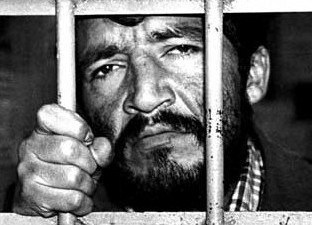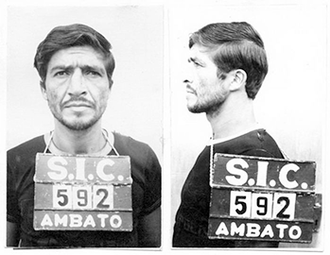12 Petrifying Pedro Lopez Revelations That Question the Essence of Evil (18+)
Key Takeaways
- Pedro Lopez, known as the “Monster of the Andes,” is believed to have claimed over 300 victims.
- His victims were typically young girls, lured away under false pretenses before being brutally murdered.
- Lopez’s motivation for killing was rooted in a dark compulsion, fueled by his own history of abuse.
- Despite his capture and confession, Lopez was released from prison, raising questions about justice.
- Understanding the full scope of Lopez’s crimes provides insights into the nature of evil and the importance of vigilance in protecting the innocent.
Unmasking a Shadow in Human Form
Pedro Lopez was a notorious serial killer born in Colombia in 1948. He claimed to have faced the tragedy of abuse and violence from a young age. His early years were marked by abuse and violence, which shaped his psyche into a serial killer.
Lopez’s crimes were massive, spanning Colombia, Ecuador, and Peru. His nomadic lifestyle in remote regions with deficiencies in law enforcement operations allowed him to carry out his campaign which exposed the vulnerability of vulnerable communities.
Lopez’s atrocities were once considered mythical, but as investigators unraveled the truth, it became clear that he was a real danger. This revelation serves as a warning that sometimes the most unbelievable stories are rooted in truth, and we must be prepared to confront them, even if they may be unsettling.

Petrifying Pedro Lopez Revelations That Shock the Conscience
Now, let’s delve into the specific revelations about Pedro Lopez that challenge our comprehension of evil. These are not just facts; they are stark lessons in the human capacity for cruelty and the imperative for justice that often goes unmet.
1. The Unfathomable Scale of Lopez’s Campaign of Terror
When we consider the sheer number of lives Lopez claimed, the reality is almost beyond comprehension. Over 300 young souls, each with their own story, were extinguished by one man’s hand. Most importantly, we must remember that behind each number is a human being whose life was brutally cut short. Their stories, though silent, must compel us to action – to protect, to prevent, and to honor their memory.
2. The Haunting Methodology Behind Each Young Life Taken
Lopez’s murder method was effective, using deception to gain the trust of young girls before leading them to their untimely deaths. This methodical approach teaches the importance of educating and empowering youth to recognize danger and resist it. Lopez’s cold calculation highlights the need for community awareness and collective vigilance.

3. Corroborating the Body Count: From Confessions to Hard Evidence
While skepticism initially shrouded Lopez’s confessions, the discovery of mass graves turned skepticism into horror. Each exhumed body was a piece of evidence that substantiated his claims, transforming them from the ramblings of a madman into a record of historical atrocity. This transition from doubt to confirmation is a crucial process in the field of criminal justice, underscoring the need for thorough investigation and the pursuit of truth, no matter how disturbing.
4. The Geography of Death: Mapping Lopez’s Trail of Sorrow
Lopez’s crimes spanned vast distances, with each location marking a point on a map that would tell a story of widespread tragedy. By mapping out these points, we can visualize the extent of his travels and his predatory reach. This geography of death not only serves as a record of his movements but also as a tool for law enforcement to understand and anticipate the patterns of such offenders. It’s a sobering reminder of the need for cross-border cooperation in the fight against serial crimes.
5. The Lure of Death: Lopez’s Tactics in Gaining Trust
Lopez’s methods of betrayal and manipulation of trust were varied and vile, but a common thread was the betrayal of innocence. He used gifts or promises to lure victims away from safety, teaching us that trust is precious and that the technical know-how of trusting a person should instilled in our children. Lopez’s tactics were simple yet chilling, often using trinkets or food to entrap young girls. His transformation from friend to executioner was swift and brutal, using strangulation as a deeply personal and violent act. This also highlights the importance of teaching self-defense and awareness, empowering potential victims to fight back against those who would do them harm.
6. Motivation from Abuse: Delving Into the Abyss of a Killer’s Psyche
Lopez’s actions are rooted in a twisted logic that seeks to justify the unjustifiable. He claimed a compulsion, a need to kill, was born from the abuses he himself suffered. This provides a lens through which to view the cyclical nature of violence and the importance of breaking that cycle. Lopez’s history of abuse, beginning in his unstable childhood and continuing through his time in prison, is a tragic narrative that society must strive to break through intervention, support, and rehabilitation. Understanding the psychological breakdown of Lopez’s urge to kill can help identify warning signs and intervene before thoughts turn to action.
7. Disposal of Bodies: Graveyard Whispers and the Aftermath
Murder is a final act, and in Lopez’s case, the disposal of the victim’s body was chillingly nonchalant. He left the bodies in shallow graves or exposed to the elements, revealing his disregard for human life. The burial sites chosen by Lopez were often remote, making the discovery of the victims’ remains difficult. Forensic teams analyze these sites to piece together the narrative of the crimes and provide closure for families. Lopez’s regular visits to the scenes of his was a morbid ritual, speak to a deeper pathology and is a reality investigators must face to track in order to understand the tactics of serial offenders.

8. Evading Capture: How Lopez Used Geography to His Advantage
Lopez evaded law enforcement by utilizing his geography and knowledge of jurisdictional limitations especially where lack of resources hampered police efforts. He frequently moved across South American borders, blending into transient populations. His ability to cross borders with ease was a result of his understanding of geography, which allowed him to cross national boundaries. This highlights the importance of international cooperation and unified databases in the pursuit of such criminals, emphasizing the need for effective communication between law enforcement agencies.
9. Cunning Disguises: Lopez’s Chameleon-Like Adaptations
Like a chameleon, Lopez adapted to his surroundings. He was known to pose as a beggar or a street vendor, using these disguises to observe and select his victims without arousing suspicion. His ability to blend into the local environment was a key factor in his prolonged freedom. It teaches us that, often, the most dangerous individuals are those who can seamlessly integrate into society, hiding in plain sight.
10. Capture and Imprisonment: The Falcon in the Cage
The eventual capture of Pedro Lopez came not through a grand police operation but rather as a result of a failed abduction attempt. It was a stroke of luck that led to his arrest in 1980 when a group of market traders in Ecuador caught him trying to lure a young girl away. This chance encounter was the beginning of the end for Lopez’s reign of terror, leading to his imprisonment and the subsequent revelations about his crimes.
11. The Failed Abduction: Turning Point in the Lopez Saga
The failed abduction in Ecuador was a critical turning point in the Lopez saga. It illustrates the importance of community vigilance and the role that everyday citizens can play in the apprehension of criminals. Had it not been for the intervention of those market traders, Lopez might have continued his horrific campaign indefinitely. It’s a potent reminder that we all have a part to play in keeping our communities safe.
12. Legal Loopholes and Their Consequences: Lopez’s Premature Release
Ecuador’s laws release Lopez in 1998 because it did not allow for life imprisonment. Lopez was released despite his confession to the murder of hundreds of young girls. This highlights the gap between law and justice and the need for evolving legal systems to protect society from dangerous individuals. Since his release from prison in Ecuador, Lopez’s whereabouts remain unknown, and the possibility that he could re-offend is a chilling prospect. His cases emphasize the importance of international legal frameworks to prevent oversights and ensure justice.
Embracing the Shadows to Shed Light
As we come to terms with the petrifying revelations of Pedro Lopez’s crimes, we must reflect on the darkness he represents, not to dwell in it, but to understand and illuminate the paths to prevention. His story is one of many that teach us the importance of awareness, the necessity of robust legal systems, and the power of community action. By learning from the past, we can strive to protect the future.
Frequently Asked Questions (FAQ)
Lopez was captured after a failed attempt to kidnap a girl from a market in Ecuador. His arrest was not the result of a police operation but rather the vigilance of the local community members who intervened.
Lopez was released due to Ecuador’s prison laws at the time, which did not accommodate life sentences or terms longer than what he had served. This has sparked widespread criticism and calls for legal reform.
Lopez targeted young, vulnerable girls, often in public places like markets. He would lure them away with small gifts or promises, taking advantage of their innocence and trust.
Since his release in 1998, Lopez’s whereabouts have remained unknown. There have been no confirmed sightings or updates on his location, which has been a source of concern for authorities and the public alike.
